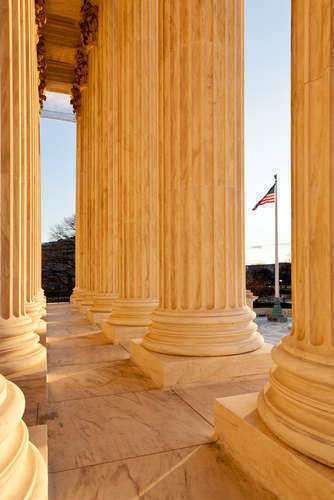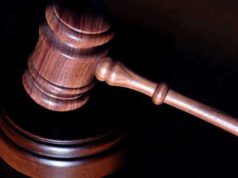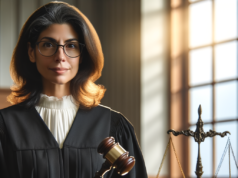Table of Contents

In 1983, a case reached the United States Supreme Court that would have a profound effect on the rights of high school students to free speech. This was the case of Hazelwood v. Kuhlmeier, where a Missouri high school principal had censored a school newspaper, leading to a legal battle that lasted for years. This article will provide a detailed overview of the Hazelwood v. Kuhlmeier case, including when it happened, the process, the outcomes, and the impact it had on the United States legal system.
Background of the Case
The Hazelwood v. Kuhlmeier case arose in 1983 from a dispute at Hazelwood East High School in St. Louis, Missouri. The school had produced a newspaper, The Spectrum, which was written and edited by the students under the supervision of a journalism teacher. The May 1983 issue of the paper contained articles on several sensitive topics, including teenage pregnancy and divorce. The principal, Robert Reynolds, deemed these articles inappropriate and ordered them removed from the paper shortly before its publication.
The journalism students and their teacher, Cathy Kuhlmeier, sued the principal and the school district, arguing that the censorship violated their First Amendment rights to free speech and press. They also contended that the censorship was arbitrary and discriminatory, as other school newspapers had published similar articles without incident. The case eventually made its way to the Supreme Court, where the justices had to decide whether the school’s actions were constitutional or not.
Proceedings of the Case
The Hazelwood v. Kuhlmeier case went through several levels of court before reaching the Supreme Court. Initially, a federal district court ruled in favor of the students, finding that the censorship was not based on legitimate educational concerns and therefore violated their First Amendment rights. However, the Eighth Circuit Court of Appeals reversed the decision, holding that the principal had the authority to regulate the content of school-sponsored publications as long as the regulations were both reasonable and viewpoint neutral.
The Supreme Court heard oral arguments in the case on October 13, 1987. The main issue before the Court was whether the school’s authority to regulate student speech in a school-sponsored forum extended to the content of student newspapers. The students and their lawyer, Robert VanderLaan, argued that the newspaper was a public forum and therefore entitled to full protection under the First Amendment. The school district and its lawyer, Michael F. Bennet, argued that the newspaper was not a public forum, but rather a school-sponsored activity subject to reasonable regulation.
Outcomes of the Case
On January 13, 1988, the Supreme Court issued a 5-3 decision in favor of the school district, upholding the censorship of the newspapers. The Court held that the newspaper was not a public forum, but rather a school-sponsored activity subject to reasonable regulation. The Court further explained that the school had legitimate pedagogical reasons to regulate speech that was inconsistent with its educational mission, such as preventing disruption of the school environment, protecting the privacy rights of students, and ensuring that the editorials did not interfere with the educational goals of the school.
The Hazelwood decision had a significant impact on the rights of high school students to free speech. It limited their ability to express controversial or unpopular opinions in school-sponsored publications, and gave considerable discretion to school administrators to regulate speech that they deemed inappropriate. However, the decision also left some room for interpretation, such as what constitutes a legitimate pedagogical reason for regulation and what level of regulation is reasonable and viewpoint-neutral.
Impact on the US Legal System
The Hazelwood decision has had a lasting impact on the US legal system for the past 30 years. Here are 10 interesting facts about the case and its legacy:
- The Hazelwood decision was a departure from previous Supreme Court rulings on student free speech, such as Tinker v. Des Moines Independent Community School District (1969), which held that students have the right to express themselves as long as their speech does not disrupt the educational process.
- The Hazelwood decision has been criticized by civil liberties advocates and educators alike, who argue that it erodes the First Amendment rights of students and creates a chilling effect on student journalism and expression.
- The Hazelwood decision has been interpreted differently by lower courts, with some courts applying it narrowly to school-sponsored publications and others using it to justify a broader range of school censorship.
- The Hazelwood decision has prompted some states to pass laws that specifically protect the rights of student journalists, such as California’s Student Free Expression Law and Maryland’s Student Press Freedom Act.
- The Hazelwood decision has generated debate over the role of schools in preparing students for democratic citizenship and the tension between academic freedom and administrative control.
- The Hazelwood decision has led to the formation of advocacy groups and legal assistance programs for student journalists, including the Student Press Law Center and the Journalism Education Association.
- The Hazelwood decision has been invoked in various other cases involving the regulation of student speech, such as Morse v. Frederick (2007), which upheld the suspension of a student for displaying a banner with the words “Bong Hits 4 Jesus” at a school event.
- The Hazelwood decision has been used to defend the rights of schools to regulate speech that is detrimental to the educational goals of the institution, such as cyberbullying and hate speech.
- The Hazelwood decision has renewed questions about the value of student journalism in promoting free speech, critical thinking, and civic engagement in a democracy.
- The Hazelwood decision remains a controversial and contested issue today, with many students, educators, and journalists advocating for greater protections and freedom for student speech and press.
In conclusion, Hazelwood v. Kuhlmeier was a landmark case that limited the rights of high school students to free speech in school-sponsored publications. The case had significant implications for the balance between academic freedom and administrative control, and has resulted in ongoing debates and controversies over the rights of student journalists in the United States. While the Hazelwood decision remains contentious, it serves as a reminder of the importance of protecting First Amendment rights and promoting democratic values in our schools and society.
Hazelwood v. Kuhlmeier: The Background
The case of Hazelwood School District v. Kuhlmeier is one of the most famous legal matters in U.S. history. Catherine Kuhlmeier was a student at East High School in St. Louis County, Missouri. The young student was a leading member of the school’s newspaper, titled “The Spectrum.”
The case of Hazelwood v. Kuhlmeier deals with what was published in the paper and how those stories affected the girl’s First Amendment rights or Freedom of Speech liberties. The school paper had a review process for what can and cannot be produced. This process consisted of the Principal of the School looking over the subject matter and content expressed in the paper.
When the principal of East High School discovered that the paper wanted to produce stories dealing with teen pregnancy and divorce, he said that those stories were a violation of the student body’s right to privacy. The articles were specific in nature and used some students as examples. The principal claimed that the stories did not protect the identities of the students mentioned in the articles. In response to outlawing the articles from being posted, the school paper claimed that the principal had violated their 1st Amendment rights.
Hazelwood v. Kuhlmeier: The Case Profile
The Hazelwood v. Kuhlmeier case began on October 13th of 1987. Catherine Kuhlmeier filed the case because she claimed the Hazelwood school district violated her First Amendment rights to free speech. In Kuhlmeier v. Hazelwood, Catherine Kuhlmeier claimed that the news printed in her publication did not break any laws with regard to the public school system.
Hazelwood v. Kuhlmeier: The Verdict
The case of Hazelwood v. Kuhlmeier was heard in the United States Supreme Court. Hazelwood v. Kuhlmeier was decided on January 13th of 1988.
The United States Supreme Court ultimately ruled in favor of the Hazelwood School District. The court stated that public settings, such as schools, will differ based on their location. As a result of this variance, the public school and their attached rules will govern over what can be produced by any publication associated with the school. Therefore, a school may not be entitled to adhere completely to the 1st Amendment.
The 1st Amendment to the United States Constitution ensures that all American citizens are granted the freedom to express themselves in accordance with the law. The 1st Amendment, which is part of the Bill of Rights, prohibits the passing of any law that impedes the free practice of religion, free speech, and freedom of the press.






















